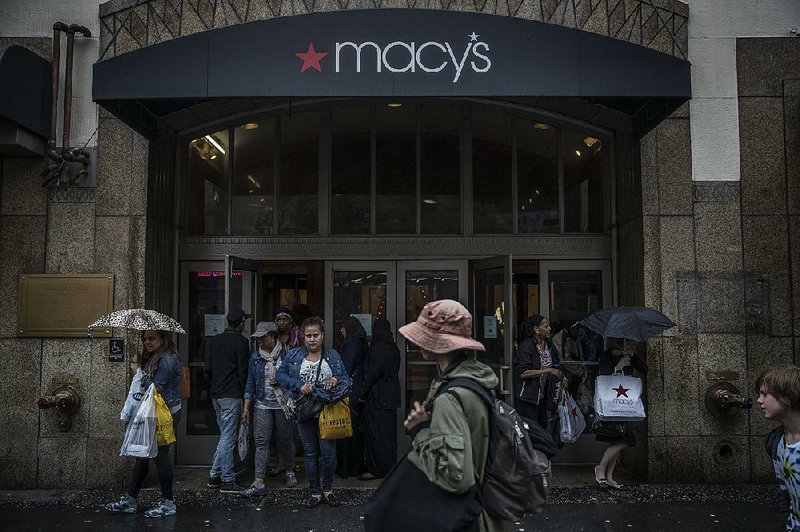SEATTLE -- A series of painful earnings reports by department-store chains earlier this month showed the extent of a decline that experts say is being sped up by Amazon.com's growing might in the apparel market.
These venerable emporiums, which sell a wide variety of apparel and accessories, have suffered as consumers still reeling from the recession hunt for discounts at outlets or shop online.
But it's online retailers, and particularly Seattle-based Amazon, that pose the biggest threat to department stores.
Analysts with Morgan Stanley say online stores, led by Amazon, since 2005 have added almost as much yearly apparel revenue ($27.8 billion) as the $29.6 billion in sales that the department stores have lost.
Amazon, according to these analysts, is already the second largest seller of clothes in the U.S., after Wal-Mart, when counting merchandise sold on its platform by third parties.
As more U.S. households join Amazon's Prime membership program and the company doubles down on its own fashion offerings, by 2020 the company could come to dominate nearly a fifth of U.S. apparel sales, up from about 7 percent today, these analysts estimate.
Amazon is certainly flaunting its fashion ambitions. It has opened photo studios in New York and London and a constellation of private label brands.
Chief Executive Officer Jeff Bezos recently told Fortune that he is closely looking at Amazon's fashion efforts. "I think there's so much opportunity for invention there," he told the magazine.
Based on their own survey, Morgan Stanley analysts concluded that there's plenty of evidence that Amazon is a budding fashion power.
Some 20 percent of U.S. shoppers frequently buy clothes on Amazon, and 40 percent consider it an "excellent" or "great source of fashion inspiration," the Morgan Stanley report said.
Department-store executives blamed their results on weakness in apparel spending by consumers, scarce tourists, bad weather and stiff competition in discounting.
Department-store giant Macy's quarterly revenue plummeted 7.4 percent amid a spate of store closures and sluggish sales in stores that remained open. J.C. Penney posted a decline in sales at a time when Wall Street was expecting a slight bump.
Kohl's so-called comparable sales -- those made at stores open at least a year ago and a critical measure of a retailer's ability to draw in customers -- fell 3.9 percent. Nordstrom, whose well-heeled shoppers helped full-price stores hold the line for years while it built a thriving online business, also caved in. Comparable sales at big department stores fell 7.7 percent, leading to Nordstrom's first drop in revenue since the recession started.
Analysts with Conlumino called Nordstrom's numbers "dismal," and said the company, which is building a major store in New York, expanding in Canada and doing expensive retrofits in several major markets, may have to "review its growth initiatives" if sales fail to improve.
Analysts with Cowen, however, put Nordstrom among the retailers that can still win in an Amazon-dominated environment because it offers either a unique store experience or "compelling service options."
In the eyes of Morgan Stanley, the weakness is about to get worse across the entire department-store segment.
Revenue is expected to decline annually about 8.5 percent on average through 2020, steeper than the 6.5 percent drop seen for the past 10 years. By the end of the decade, department stores, which 10 years ago accounted for a quarter of apparel sales in the U.S., will have just 7 percent of the market.
Morgan Stanley pins the blame on Amazon, which has captured a big part of the growth in e-commerce.
Amazon's growing prominence in fashion is persuading more brands to set up Amazon channels of their own.
Fashion offers a few pitfalls for Amazon. For starters, it has to deal with a lot more returns (Morgan Stanley says the return rate for online retailers of apparel is 50 percent.)
"They're going to have an interesting challenge when they start getting all those returns coming back online," said Macy's CEO Terry Lundgren during an investor call last March.
There, Macy's has an advantage, because most of the returns of items purchased online are brought back to the store. "So we, at least, have a shot at selling them something else and repurposing the apparel product inside the store," Lundgren said.
Business on 05/24/2016
